Some years ago, I had the need to wind up all of the wire from the fields that I used to raise animals in. I could have purchased a machine to do that, but that looked like an expensive proposition and I needed it to be pretty flexible.
I first thought of a spool with a crank handle, actually a spinning jenny with a handle. I rolled up a few thousand feet that way and quickly decided that my arms and shoulders wouldn't survive the at least 140,000 feet left to go.
So, I decided to build my own wire winding machine.
The basics of the machine are that it is made of simple parts that I could get and work with. Secondly, I needed a rotary force, so I would use a 1/2" drill I had. Power to the drill was from a portable generator, because I had a lot of wire to roll up (140,000 ft is about 26.5 miles or 46.6 kilometers). Third, I needed to mount this thing to the bale spikes on the front of the tractor, so I would need a way to make that work (remember there is a lot of wire to roll up). Lastly, it needed to be pretty robust since I was going to try to get 1,000 to 2,000 ft of wire on the spool if possible (that is about the longest run before there were turns or tighteners which made natural break points for the wire run).
This is not a step by step build, but rather some photos I took when I last used the machine to clean up about 400ft of fence with the machine.
This first image is the overall view of the machine in operation. The frame is build from strut. On the left side you can see the blue drill which is connected to a shaft which turns a small roller chain sprocket. That shaft is the smallest I could get for the 1/2" shaft which runs in pillow blocks. The first sprocket connects to a larger sprocket on another shaft toward the right of the first and that shaft has another small sprocket and chain that runs to the the last sprocket in the middle of the image. That last sprockt has the winding frame attached to the back side of the octogonal aluminum plate which has a sprocket mounted to it (drilled and tapped). All the shafts and sprockets have keyways in addition to set screws. Continuing toward the right, there are a couple of right angle strut brackets and a rod of all thread used to hold a spool of wire used to tie off the wrapped wire. That wire worked fine, but on short runs, it was quicker to use zip ties, I got a pretty good deal on bulk ties. Furthest to the right are some cross strut pieces which hold a funky assembly which is used to guide the wire onto the wrapper. That assembly is made up of a bunch of pipe and pipe reducers and has some length to cause and keep the wire to wrap in the middle-ish of the wrapper. I didn't have a lathe to make that, so it was much easier to go the the hardware store and reduce from 2" to 1/2" that way.
You can see the yellow extension cord which goes to the back of the tractor where there is a carrier for tools, scraps, the generator, etc.
Here are some more images showing other views of the machine.
Here are some dimensions images
This next images are a closeup of the hub before pulling the hair pins, pulling a pin, all pins pulled, and rolled wire extracted and put on the bale spikes. The hair pins have a nut mig-welded to them to make a stop to keep the hairpin from going in too far. There are 3 fixed Spool Legs and 5 Hairpin legs. I did it that way so that ther could be no way it would not loosen enough to get the tightly wrapped wire off the wrapper. Usually, I only needed 4 to get the wire off, long runs took all 5.
Then I put a Hairpins back and the wrapper is ready to go again, so we load a new wire through the guide, bend it to a J, and insert the J into one of the tubing arm ends that is NOT held together with a Hairpin
Cycle time from wrapped to ready to wrap again is pretty quick.
Finally, to put the machine away, loosen the set screws on the key for the wrapper hub sprocket and slide the wrapper assembly off, remove the chain holding the machine to the tractor, and put the frame on the handtruck to wheel it to storage.
I did bend the shafts a little (maybe 1/8" out of true) -- full speed on the drill with that reduction means there was a bit of torque. This happened when the wire got caught on something. Could have been a tangle, could have been a tensioner I missed, could have been a wire crimp joiner (thus the large bell reducer to minimize those from snagging), could have been I forgot to do something. However, I have rolled up the 140,000ft of wire and the roll chain let me have some misalignment. I learned to roll at least two fence post spacings of wire before I ran the drill at full speed. I always stood near the drill, so I was out of the way. The wire was high tensile wire, but I have rolled up other wire as well. Never had the wire break, not enough torque. Once the end got close, the drill was stopped and I went to the other side of the wrapper and hand turned the wrapper to get the end through and then fastened the spool (either wire or zip ties).


 LinkBack URL
LinkBack URL About LinkBacks
About LinkBacks
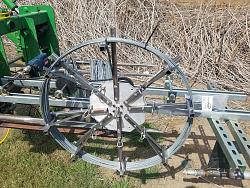
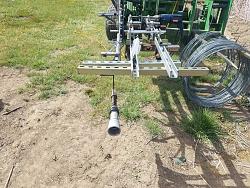
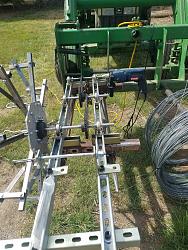
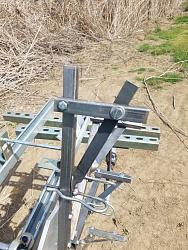
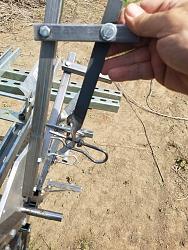
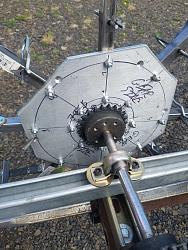
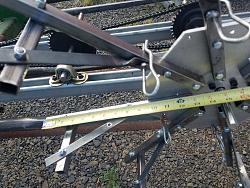
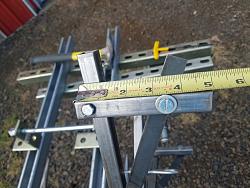
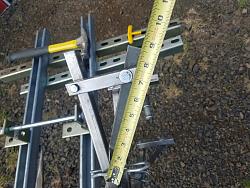
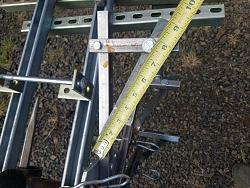
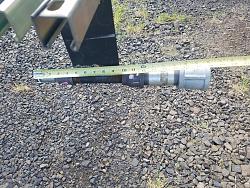
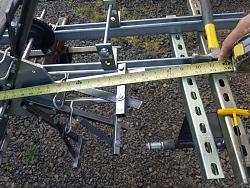
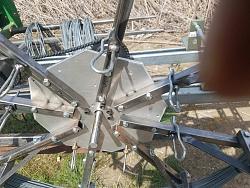
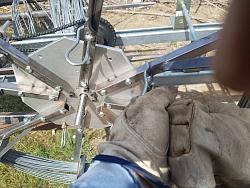
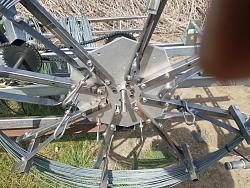
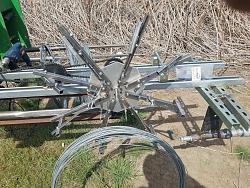
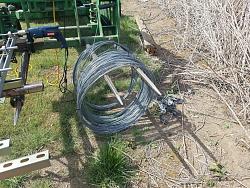
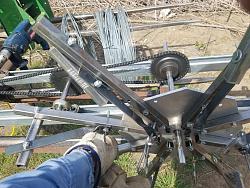
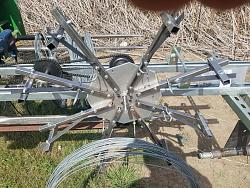
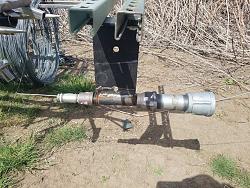
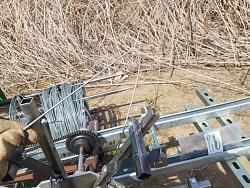
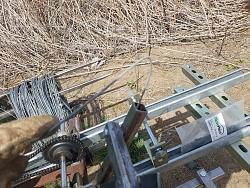
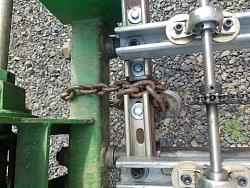
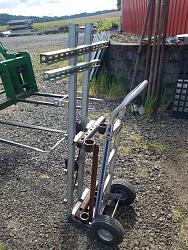


 Reply With Quote
Reply With Quote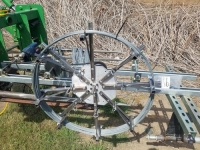








Bookmarks